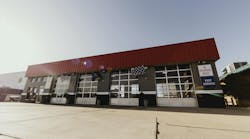In today’s competitive market, quick lube owners are faced with managing costs to ensure profitability while keeping service levels at or higher than their customers’ expectations. Every penny counts, and squeezing out those essential pennies can be a monumental task for quick lube owners. However, when owners strategically select the brands they offer along with choosing innovative packaging styles for quick lubes, you’ll find that the pennies will add up quickly.
Selecting a Brand
Quick lube owners have two choices when it comes to a brand: name-brand or independent brands. First, there’s the name-brands with which we are all familiar. They’re household names we’ve grown up with; names that you see sponsoring race cars; names which are emblazoned on apparel and other merchandise. Then, you have independent brands — names which you’ve not heard of before and rarely see sponsoring race cars, celebrities or on apparel and merchandise.
A majority of the time, a difference between name-brand and independent-branded products is the amount of marketing and overhead costs the companies are willing to spend. There are many independent brand companies who are members of the Independent Lubricant Manufacturer Association (ILMA) who make exceptional products using the very same additive chemistries as the name-brand companies and purchase their base oils from these very same name-brand companies in many instances. These companies pass the savings from minimal advertising and overhead costs directly to customers, providing a better value. Additionally, passenger car engine oils and transmission fluids are highly regulated with the quality spectrum dictated by the likes of Amercian Petroleum Institute (API) and manufacturers like GM with dexos, so products specifications are so narrow that any differences between these products can be virtually nil.
However, quick lube owners should be cautious when selecting a lubricants provider. It’s no secret there are nefarious marketers and manufacturers in the oil business, and there always has been. However, ILMA works tirelessly to ensure its membership does not include any businesses who do not meet the standards and ideals set forth by the organization.
When it’s time to select a lubricants brand, it is prudent to do your research. Does the manufacturer operate an ISO-certified plant? Are the products registered with API, as dexos or any other regulated quality spectrum that is needed? Is the brand willing to let you visit and inspect the plant where the products are made? Is the brand a member of any professional organizations, such as ILMA? In asking and receiving answers to these questions, quick lube owners can make informed decisions around the brands they select.
Time to Upgrade Your Packaging Style
Traditionally, quick lube owners had to allot valuable space to stocking quarts and jugs or choosing a few 55-gallon drums of a single type of product to achieve bulk pricing to increase profitability for the operation. This method of dispensing created more plastic waste and reduced efficiency for technicians.
Over the past five years, the bag-in-a-box concept has taken off in the lubricants industry. This innovative way to package lubricants has helped reduce waste while eliminating the need for space-robbing drums or costly bulk tanks. The bag-in-a-box streamlined dispensary allows technicians to quickly and accurately dispense the correct amount needed while the corresponding rack system contains pans below each shelf to catch any oil or fluid that is spilled. Most bag-in-a-box products hold 24 quarts of motor oil or transmission fluid — enough for several oil changes.
Quick lube owners who have made the transition from stocking quarts, jugs and drums to the bag-in-a-box concept are quickly reaping the benefits of increased profit from buying in bulk while continuing to provide the level of service their customers have come to expect.
Selecting a brand and the correct packaging style are just two ways you can increase profitability in the competitive quick lube environment. Don’t be afraid to step outside of the brand-name offerings to discover new savings which you can pass on to your customers. Quick lube owners dedicated to long-term success should be on the lookout for new and innovative ways to reduce waste, increase customer satisfaction and maximize efficiency.





